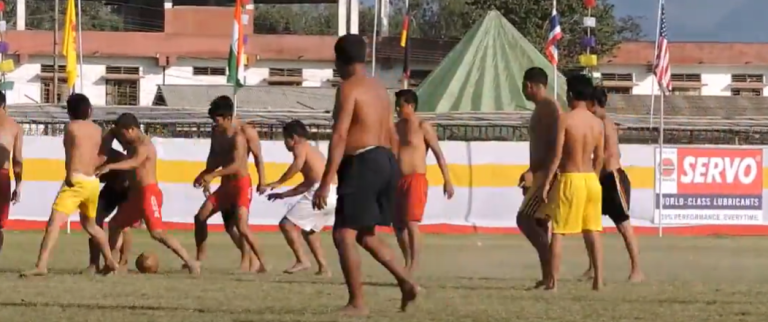General Rules of Gliding Sport
When participating in gliding sport, make sure you complete pilot training, meet medical standards, and master emergency procedures. Understand airspace designations, avoid no-fly zones, and respect right-of-way rules. Conduct pre-flight safety checks diligently, assess weather factors, and follow proper launch and landing procedures. Communicate clearly using radios and hand signals, prioritize safety during post-flight maintenance, and upkeep for longevity. These rules lay the foundation for a thrilling and safe gliding experience, elevating your skills and ensuring a smooth journey through the skies.
Glider Pilot License Requirements
To become a glider pilot, you must fulfill specific requirements for obtaining a glider pilot license. Initially, you need to complete the training requirements set by aviation authorities. This typically involves ground school instruction to learn about aerodynamics, weather patterns, navigation, and emergency procedures. Practical flight training is also mandatory, where you'll learn how to control the glider, perform take-offs, landings, and manage different flight scenarios.
In addition to the training requirements, obtaining a glider pilot license also necessitates meeting specific medical certification standards. You must demonstrate that you are in good health and do not have any medical conditions that could impair your ability to fly safely. This usually involves passing a medical examination conducted by an aviation medical examiner.
Airspace Regulations and Restrictions
Flying through the skies as a glider pilot demands a thorough understanding of airspace regulations and restrictions to guarantee safe and efficient flights. When piloting through the skies, it's vital to be aware of various airspace designations. For example, military airspace is strictly off-limits to glider pilots due to potential conflicts with military operations. No-fly zones, which can include areas around airports or sensitive installations, must be respected at all times to make certain the safety of all airspace users.
Furthermore, with the increasing integration of drones into the airspace, glider pilots need to exercise caution. Understanding where drones are permitted to fly and being vigilant in shared airspace is essential to prevent mid-air collisions. Additionally, safety zones are designated areas where specific activities like airshows or aerial firefighting take place, and glider pilots must be aware of these zones to avoid interference.
Pre-Flight Safety Checks
Before starting any gliding flight, it is essential to conduct thorough pre-flight safety inspections to verify the aircraft's airworthiness and the pilot's readiness for a safe journey. Begin by going through an equipment checklist, ensuring that all components are in good condition and secure. Inspect the control surfaces, landing gear, and any other vital parts to ensure they are functioning correctly. It's also important to assess the wind conditions, as they play a significant role in the safety and performance of your flight. Understand the wind direction, speed, and any potential turbulence that could impact your glider during takeoff, flight, and landing. By carefully examining the equipment and being mindful of the wind conditions, you enhance the safety of your gliding experience. Remember, a thorough pre-flight inspection lays the groundwork for a smooth and secure journey through the skies.
Right-of-Way Rules in the Air
When soaring through the skies, it's essential to understand airspace priority rules and maneuvering clearances. By knowing these right-of-way rules, you can navigate the airways safely and effectively. Stay alert and aware of your surroundings to guarantee smooth and secure gliding experiences.
Airspace Priority Rules
Flying through the skies requires a sharp comprehension of airspace priority rules, which govern right-of-way regulations to guarantee safe and efficient flight operations. When sharing the airspace with other aircraft, understanding and adhering to airspace priorities and safety protocols are essential. Below is a table outlining some key aspects of airspace priority rules:
| Airspace Etiquette | Traffic Management | Airspace Priorities |
|---|---|---|
| Follow ATC commands | Maintain safe distances | Emergency aircraft have priority |
| Communicate intentions | Yield to aircraft on the right | Gliders have priority over balloons |
| Respect speed restrictions | Give way to faster aircraft | Balloons should yield to all other aircraft |
| Use proper lighting | Obey holding patterns | Aircraft on instrument approaches have priority |
| Monitor radio frequencies | Cooperate with traffic flow | Avoid overflying sensitive areas |
Understanding and following these guidelines will ensure smooth and secure gliding experiences.
Maneuvering Clearances
Flying through the skies involves understanding maneuvering clearances and right-of-way rules to guarantee safe and efficient flight operations. When it comes to maneuvering clearances, following clearance protocols is essential for aerial etiquette. Maintaining maneuvering safety and airspace awareness is vital to avoid mid-air conflicts. Always be aware of your surroundings and communicate effectively with other gliders to make sure smooth operations. Remember, respecting right-of-way rules is not just about rules but about promoting a culture of safety and cooperation among gliders. By adhering to these guidelines, you contribute to a safer and more enjoyable gliding experience for everyone in the sky. Stay alert, communicate clearly, and prioritize safety above all else.
Emergency Procedures and Protocols
When facing emergencies in gliding, understanding proper emergency landing techniques and maintaining effective communication are vital. Knowing how to execute emergency landings in varying situations can make a significant difference in ensuring safety. Additionally, clear and concise communication protocols during emergencies can help coordinate swift and effective responses.
Emergency Landing Techniques
In the event of an emergency during a gliding flight, it is important to be well-versed in the proper emergency landing techniques and protocols. Emergency procedures and simulation training are essential for preparing for unforeseen circumstances. Understanding landing gear and repair techniques can be invaluable when faced with the need for an emergency landing. During simulation training, focus on practicing swift decision-making, evaluating landing spots, and executing emergency procedures efficiently. Knowing how to handle emergency situations calmly and confidently can make a significant difference in ensuring your safety. Familiarize yourself with the aircraft's emergency checklist and practice emergency landing techniques regularly to be prepared for any unexpected events while gliding. Stay attentive and proactive to mitigate risks effectively.
Communication During Emergencies
During emergencies in gliding, effective communication is vital, especially when following the established emergency procedures and protocols. It is essential to have a clear understanding of how to communicate using emergency signals and the available communication equipment. Below is a table outlining common emergency signals and the recommended communication equipment to use during emergencies:
| Emergency Signal | Description | Communication Equipment |
|---|---|---|
| Mayday | Indicates a life-threatening emergency | Emergency radio |
| Pan-Pan | Indicates an urgent situation | Handheld transceiver |
| 7700 | Aircraft transponder code for emergencies | Intercom system |
| Emergency Squawk | Activating the aircraft's emergency squawk | Satellite phone |
Weather Conditions Awareness
To safely engage in gliding, awareness of weather conditions is paramount. Before taking flight, it is essential to assess factors such as wind speed, cloud cover, temperature, and humidity. Wind speed can greatly impact your gliding experience, affecting lift and drift. Understanding cloud cover is vital as it can indicate areas of rising air currents or potential turbulence.
Temperature and humidity play a significant role in gliding. High temperatures can lead to thermal lift, while low temperatures may result in sinking air. Humidity levels can affect the density of the air, influencing the performance of your glider. Be mindful of these factors to guarantee a safe and enjoyable flight.
Monitoring weather conditions throughout your gliding experience is crucial. Sudden changes in wind speed, cloud formations, or temperature can signal potential hazards. Stay vigilant and be prepared to adjust your flight plan accordingly. By staying informed and aware of weather conditions, you can enhance your gliding skills and overall safety.
Aerotow and Winch Launch Procedures
Being aware of weather conditions prepares you for a successful aerotow or winch launch in gliding sport. Aerotow coordination is pivotal for a safe and efficient launch. Before the launch, make certain that the towline is properly attached, the radio communication with the tow pilot is clear, and all safety checks are completed. Additionally, understanding winch safety is paramount during winch launches. Ensure the winch operator is experienced and follows all safety protocols.
Proper launch preparation is key to a smooth takeoff. Check that the glider is aligned with the tow plane or winch, the controls are responsive, and the airspeed indicator is functioning correctly. When ready, maintain a steady position during takeoff to ensure a stable ascent.
During the launch, be prepared for the cable release. Communication with the tow pilot or winch operator is essential to coordinate the release smoothly. Once released, maintain control of the glider and continue the flight according to your plan. Following these procedures will help you execute a successful aerotow or winch launch in gliding sport.
Landing Pattern Etiquette
Understanding the proper landing pattern etiquette is essential for safe and efficient glider operations. When approaching for landing, it is important to follow the proper approach procedures to guarantee a smooth and coordinated landing. Maintaining a proper approach involves choosing the correct entry point into the landing pattern, adjusting your altitude and speed accordingly, and staying aware of other gliders in the vicinity.
Effective landing techniques are also essential for a successful landing. Ensuring a stabilized approach with the correct airspeed and descent rate is key to a safe touchdown. Avoiding sudden maneuvers or changes in speed during the landing phase can prevent accidents and guarantee a smooth landing for both you and others sharing the airspace.
Communication Protocols in the Air
Implementing clear and concise communication protocols while in the air is essential for guaranteeing safety and coordination among glider pilots. Radio communication plays a pivotal role in transmitting critical information between pilots, air traffic control, and other aircraft in the vicinity. Pilots must adhere to specific radio frequencies and use standardized phraseology to convey messages efficiently. This guarantees that everyone is aware of each other's positions, intentions, and any potential hazards.
In addition to radio communication, the use of hand signals is an essential backup method for conveying messages, especially in situations where radio communication may be compromised. Pilots must be familiar with common hand signals used in gliding to communicate essential information such as turning directions, altitude adjustments, or indicating an emergency situation.
Post-Flight Maintenance and Inspections
After completing a gliding session, performing thorough post-flight maintenance and inspections on your glider is essential to guarantee its ongoing airworthiness and safety for future flights. Remember, proper care guarantees a longer lifespan for your equipment and a safer flying experience. Here are some crucial steps to follow:
- Equipment Maintenance: Clean the glider thoroughly to remove any dirt or debris that could impact its performance. Inspect all parts for wear and tear, paying special attention to the control surfaces and landing gear.
- Inspections: Check for any signs of damage, such as cracks or dents, that could jeopardize the structural integrity of the glider. Test all instruments and systems to ensure they are functioning correctly.
- Precautions: Store the glider in a secure location to safeguard it from environmental factors. Consider covering it with a protective tarp to shield it from dust and sunlight.
Frequently Asked Questions
What Are Some Common Risks Associated With Gliding Sport and How Can They Be Mitigated?
To guarantee safety in gliding, evaluate weather conditions, pinpoint risks, and adhere to safety precautions. Be ready with emergency procedures. Stay alert and always prioritize safety. Reduce risks by being proactive and informed.
Are There Any Age Restrictions for Obtaining a Glider Pilot License?
Imagine diving into the sky, unrestricted by time. Age restrictions vary for glider pilot licenses, but training requirements guarantee competence. You'll soar with knowledge and experience, mastering the art of gliding.
Can Glider Pilots Fly at Night or in Adverse Weather Conditions?
You can fly gliders at night under certain conditions, with proper lighting and qualifications. Flying in adverse weather requires advanced training and adherence to safety protocols. Always prioritize safety and follow regulations for night flying and challenging weather.
How Often Should Glider Pilots Undergo Refresher Training or Certification?
You need to undergo refresher training regularly to keep your skills sharp and guarantee safety. Training frequency is vital for skill assessment and practicing emergency procedures. Stay up to date and confident in the air.
Are There Any Specific Medical Requirements for Glider Pilots?
For glider pilots, medical examinations and health checks are fundamental. There are specific fitness requirements and restrictions to guarantee safety. Prioritize your health to keep enjoying the freedom of gliding while meeting these standards.






